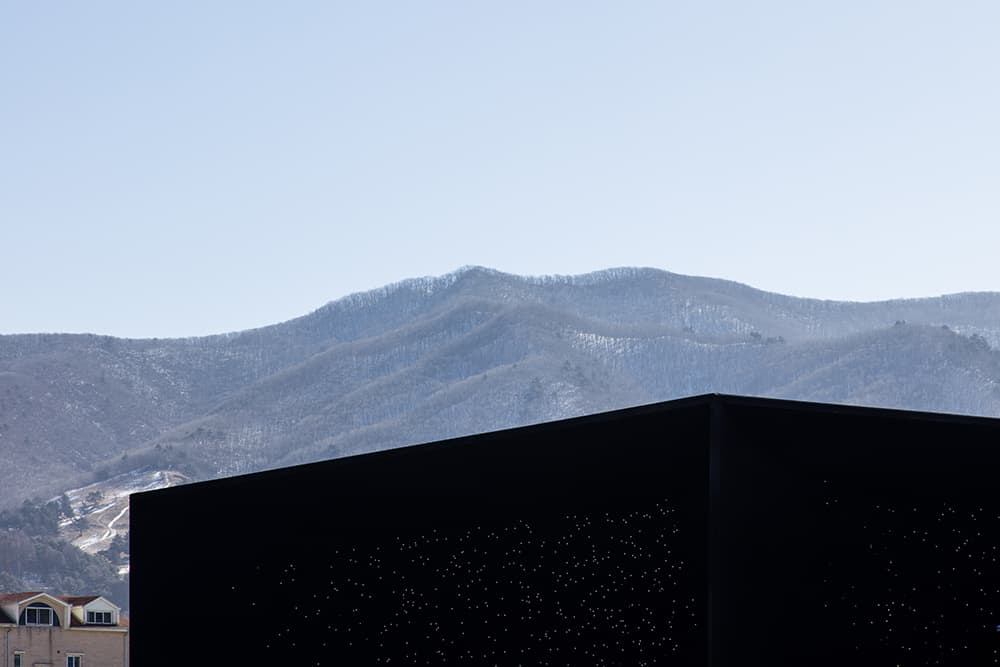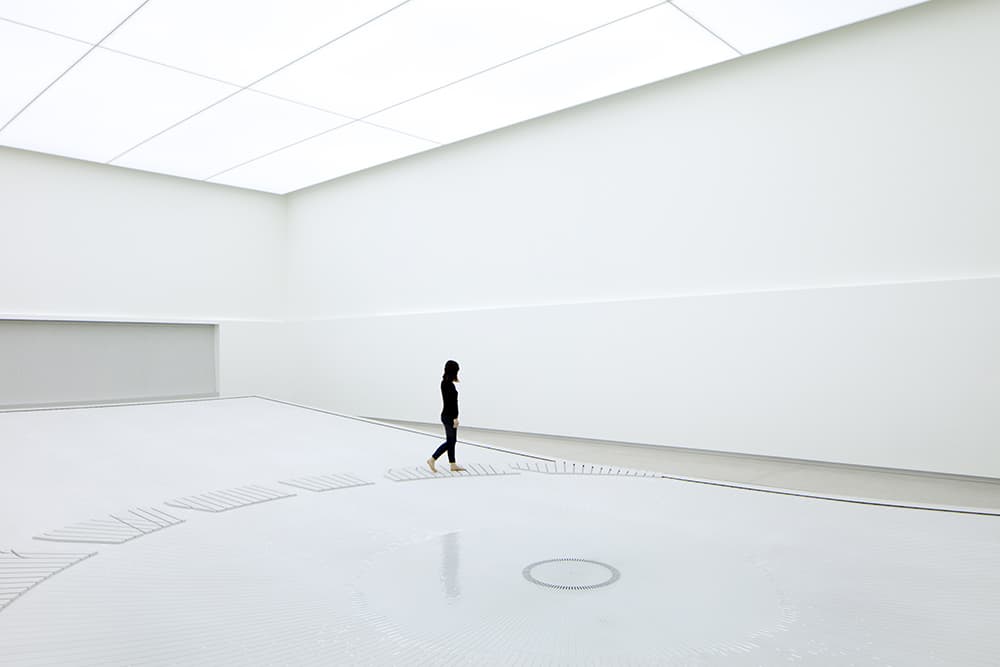World’s “Darkest Building” Opens at the Winter Olympics
- Youtube Views 10,291 VIDEO VIEWS
THE WORLD’s darkest building - coated in a material consisting of “vertically aligned (carbon) nanotube arrays” called Vantablack Vbx2 - opened in the PyeongChang Olympic Village last week.
The groundbreaking new material was developed by the UK-based Surrey NanoSystems and absorbs 99% of light that hits the surface by trapping light within its elaborate molecular structure.
As a specialist product, its application requires a team of trained experts.

Above: The Hyundai Pavilion in PyeongChang is coated in Vantablack. Below: The coating absorbs 99% of visible light (images courtesy Asif Khan/Luke Hayes).

Designed by British architect Asif Khan, the temporary pavilion was built for the South Korean motor giant Hyundai and is intended to promote its pioneering hydrogen fuel cell technology.

Above: A sample of Vantablask S-VIS, a product in the same range which absorbs 99.965% of visible light (image courtesy of Surrey NanoSystems).
An earlier version of the material, Vantablack S-VIS (launched in 2014), absorbed 99.965% of visible light, but is not suitable for application onto large scale structures.
This high-tech material was first developed for use in defense, aerospace and advanced optical equipment where it can help reduce stray light interference.

Above: By absorbing almost all incoming light, Vantablack can render even textured surfaces essentially featureless
Its use can also be extended to wayfinding, heat absorption in solar power technology, various interior uses and, according to the manufacturer’s chief technical officer, “hiding unsightly cabling that runs in the ceiling”.

Above: Inside the pavilion, a brilliant white installation featuring a network of moving water droplets serves to highlight Hyundai's leading role in hydrogen fuel-cell technology (image courtesy of Asif Khan/Luke Hayes).
The pavilion features a brilliant white interior that displays artwork of constantly moving water droplets, a reference to Hyundai’s hydrogen-powered cars whose only “exhaust” is water vapour.





